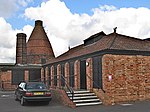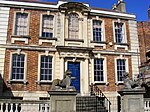Bridgwater United W.F.C.
1990 establishments in EnglandAssociation football clubs established in 1990FA WSL 1 teamsFA Women's National League teamsFootball clubs in Somerset ... and 3 more
Sport in YeovilWomen's football clubs in EnglandYeovil Town L.F.C.
Bridgwater United Women's Football Club are an English women's association football club based in Bridgwater, Somerset who were previously known as Yetminster Ladies, Sherborne Ladies, Yeovil Town Ladies and Yeovil United. Founded in 1990, they now play in the FA Women's National League South. Prior to moving to the FA WSL in 2013, the club played in the FA Women's Premier League Southern Division after gaining promotion from the South West Combination Women's Football League for a second time in 2012. The team merged with men's side Bridgwater Town in 2021 to become Bridgwater United.
Excerpt from the Wikipedia article Bridgwater United W.F.C. (License: CC BY-SA 3.0, Authors).Bridgwater United W.F.C.
College Way,
Geographical coordinates (GPS) Address Nearby Places Show on map
Geographical coordinates (GPS)
| Latitude | Longitude |
|---|---|
| N 51.131856111111 ° | E -2.9893719444444 ° |
Address
Bridgwater Town Football Club
College Way
TA6 4TZ
England, United Kingdom
Open on Google Maps









